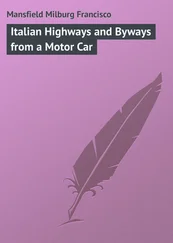Andrew Lang - Highways and Byways in the Border
Здесь есть возможность читать онлайн «Andrew Lang - Highways and Byways in the Border» — ознакомительный отрывок электронной книги совершенно бесплатно, а после прочтения отрывка купить полную версию. В некоторых случаях можно слушать аудио, скачать через торрент в формате fb2 и присутствует краткое содержание. Жанр: foreign_antique, foreign_prose, на английском языке. Описание произведения, (предисловие) а так же отзывы посетителей доступны на портале библиотеки ЛибКат.
- Название:Highways and Byways in the Border
- Автор:
- Жанр:
- Год:неизвестен
- ISBN:нет данных
- Рейтинг книги:4 / 5. Голосов: 1
-
Избранное:Добавить в избранное
- Отзывы:
-
Ваша оценка:
- 80
- 1
- 2
- 3
- 4
- 5
Highways and Byways in the Border: краткое содержание, описание и аннотация
Предлагаем к чтению аннотацию, описание, краткое содержание или предисловие (зависит от того, что написал сам автор книги «Highways and Byways in the Border»). Если вы не нашли необходимую информацию о книге — напишите в комментариях, мы постараемся отыскать её.
Highways and Byways in the Border — читать онлайн ознакомительный отрывок
Ниже представлен текст книги, разбитый по страницам. Система сохранения места последней прочитанной страницы, позволяет с удобством читать онлайн бесплатно книгу «Highways and Byways in the Border», без необходимости каждый раз заново искать на чём Вы остановились. Поставьте закладку, и сможете в любой момент перейти на страницу, на которой закончили чтение.
Интервал:
Закладка:
A few miles above Coldstream, after a course of about four and twenty miles, the beautiful little Eden Water joins Tweed. Its capabilities as a trout stream are spoken of elsewhere in this volume, and the little river is now mentioned only to record a tragedy of unusual nature which occurred in it in the earlier half of the nineteenth century. Two young ladies, sisters of the then proprietor of Newton Don, a beautiful estate on the right bank of Eden, had come from Edinburgh to pass the summer and autumn at their brother's house. With them was a friend, a Miss Ramsay. It chanced that one afternoon these three young ladies were walking along the banks of the river, on the side opposite to Newton Don. They had strolled farther than at starting had been their intention, and time had slipped past unnoticed, and while they still had some distance to go on their return way, they were surprised by the sound of the house bell ringing for dinner. Now, a little below the spot where they then were, it was possible to cross the river by stepping stones, an easy, and to every appearance a perfectly safe way by which anybody beyond the age of childhood might gain the other side, without much risk even of wetting a shoe. The three girls, accordingly, started to go over by these stones. The water was low and clear, the weather fine; there had been no thunderstorm that might have been capable of bringing down from the hills a sudden spate; the crossing could have been made a million times in such circumstances without peril greater than is to be met with in stepping across a moorland drain. Yet now the one thing happened that made it dangerous.
At some little distance up stream there stood a mill, the water power of which was so arranged, that if the sluice of the mill should for any reason be suddenly closed, that body of water which normally flowed down the mill dam after turning the wheel, was discharged into the river some way above the stepping stones. In the narrow channel of the Eden at this point, this sudden influx of water was quite sufficient to raise the stream's level to a height most dangerous to anyone who at the time might be in the act of crossing by these stones. Unhappily, at the exact moment when the three poor girls were stepping cautiously and with none too certain foot from stone to stone, and had reached to about mid-channel, the miller, ignorant of their situation and unable from where he stood to command a view to any distance down stream, closed his sluice. Down Eden's bed surged a wave crested like some inrushing sea that sweeps far up a shingly beach. In an instant the three girls, afraid to make a dash for the safety of the hank, were swept off the stones where they clung, and were carried shrieking down the swollen stream. One, Miss Ramsay, buoyed to a certain extent by the nature of her dress, floated until she was able to grasp the overhanging branch of a tree, and she succeeded in getting out. The other two, rolled over and over, buffeted by the sudden turmoil of waters, were swept away and drowned. No one was near to give help; none even heard their cries.
On the southern bank of Tweed, a mile or two up the river from Coldstream and Cornhill, stands all that is left of Wark Castle, a place once of formidable strength, and greatly famed in Border history. Except a few green mounds, and portions of massive wall, there remains now but little to speak of its former greatness, or to remind one of the mighty feats that were performed here during its countless sieges and bloody fights. But the old Northumbrian saying still tells its tale with grim simplicity:
"Auld Wark upon the Tweed
Has been mony a man's dead."
Regarding this couplet, the following comment is made in the Denham Tracts : "Mark's history, from the twelfth down to at least the sixteenth century, is perhaps without a parallel for surprises, assaults, sieges, blockades, surrenders, evacuations, burnings, restorations, slaughters. These quickly recurring events transformed the mount on which the castle stood into a Golgotha, and gave a too truthful origin to the couplet which still occurs on the Borders of the once rival kingdoms." The castle was erected during the reign of King Henry I., by Walter d'Espec, somewhere about the year 1130; and before it had been many years in existence, in 1135, David I. of Scotland captured it. From that time onwards, at least down to 1570, when Sussex spent a night within its walls on his way to harry Teviotdale, there is not one item of that formidable list of "surprises, assaults, sieges, blockades, surrenders, evacuations, burnings, restorations, slaughters," that has not been amply borne out by its history, many of them again and again. David took it in 1135, but restored it to England in the following year. Twice afterwards, the same monarch vainly attempted to take it by storm, but finally, after the fall of Norham, he reduced it by means of a long blockade. After this it remained in Scottish possession till 1157, when England again seized, and at great expense rebuilt, the castle. In 1216 it was destroyed by fire; in 1318, reduced by King Robert the Bruce; in 1385, taken by storm by the Scots. Then in 1419, William Halliburton of Fast Castle surprised the English and took the castle, putting all the garrison to the sword. But the same fate was dealt out to the Scots themselves a few months later; Sir Robert Ogle and his men gained access to the building by way of a sewer from the kitchen, which opened on the bank of Tweed. Creeping up this unsavoury passage, they in their turn surprised and slew the Scotsmen. Again in 1460, after the widow of James II. had dismantled Roxburgh and razed it almost to the foundations, the Scots forded Tweed and retook Wark. But they did not hold it long. More valuable now to the English than ever it had been before, owing to the loss of Roxburgh, it was partially repaired by them, only, however, to be again pulled down by the Scots before the battle of Flodden; after which Surrey for the last time restored and strengthened it. After the accession of James VI to the throne of England, Wark, like other Border strongholds, began to fall into decay; the need for them was gone. Buchanan, the historian, has left a description of Wark as it was in 1523, when he was with the Scottish army at Coldstream, which then besieged it. "In the innermost area," he says, "was a tower of great strength and height; this was encircled by two walls, the outer including the larger space, into which the inhabitants of the country used to fly with their cattle, corn, and flocks in time of war; the inner of much smaller extent, but fortified more strongly by ditches and towers. It had a strong garrison, good store of artillery and ammunition, and other things necessary for defence."
On this occasion the Scottish commander sent against the castle a picked force of Scottish and French troops, supported by heavy siege artillery, all under the command of Ker of Fernihurst. "The French," says Sir Walter Scott, "carried the outer enclosure at the first assault, but were dislodged by the garrison setting fire to the corn and straw laid up in it. The besiegers soon recovered their ground, and by their cannon effected a breach in the inner wall. The French with great intrepidity mounted the breach, sustaining great loss from the shot of that part of the garrison who possessed the keep; and being warmly received by the forces that defended the inner vallum, were obliged to retire after great slaughter. The attack was to have been renewed on the succeeding day, but a fall of rain in the night, which swelled the Tweed and threatened to cut off the retreat of the assailants to the main army, and the approach of the Earl of Surrey, who before lay at Alnwick with a large force, obliged the Duke [of Albany] to relinquish his design and return into Scotland."
Wark, it is said, once belonged to the Earl of Salisbury, and the tale is told how, in the time of King David Bruce, a gallant deed was done by Sir William Montague, Lord Salisbury's governor of the castle. King David, returning from a successful foray into England, passed close to Wark, making for the ford over Tweed at Coldstream, and his rear-guard, heavily laden with plunder, was seen from the castle walls by Montague's garrison. The rear was straggling. Such an opportunity was not to be wasted. The Governor, with forty mounted men, made a sudden dash, slew a great number of the Scots, cut off one hundred and sixty horses laden with booty, and brought them safely into the castle. David instantly assaulted the place, but without success; and he thereupon determined to take it by siege. There was but one way whereby the place might be saved; a message must be conveyed to King Edward III., who was then on his way north with a great army. The risk was great; failure meant death, and the castle was closely invested. Sir William himself took the risk. In a night dark and windy, with rain falling in torrents, the Governor dashed out on a swift horse and cut his way through the Scottish lines before almost the alarm had been raised; and so rapidly did Edward advance on hearing of the plight of the garrison, that the rear of the Scottish force was barely over the ford before the English van had reached the southern bank of Tweed. It is of this occasion that the more or less mythical tale of King Edward and the Countess of Salisbury's Garter is told. In the great Hall of Wark Castle the story finds a dubious resting place.
Читать дальшеИнтервал:
Закладка:
Похожие книги на «Highways and Byways in the Border»
Представляем Вашему вниманию похожие книги на «Highways and Byways in the Border» списком для выбора. Мы отобрали схожую по названию и смыслу литературу в надежде предоставить читателям больше вариантов отыскать новые, интересные, ещё непрочитанные произведения.
Обсуждение, отзывы о книге «Highways and Byways in the Border» и просто собственные мнения читателей. Оставьте ваши комментарии, напишите, что Вы думаете о произведении, его смысле или главных героях. Укажите что конкретно понравилось, а что нет, и почему Вы так считаете.












